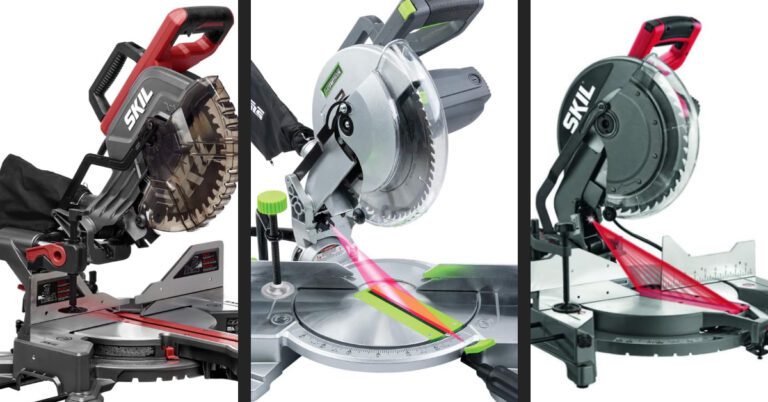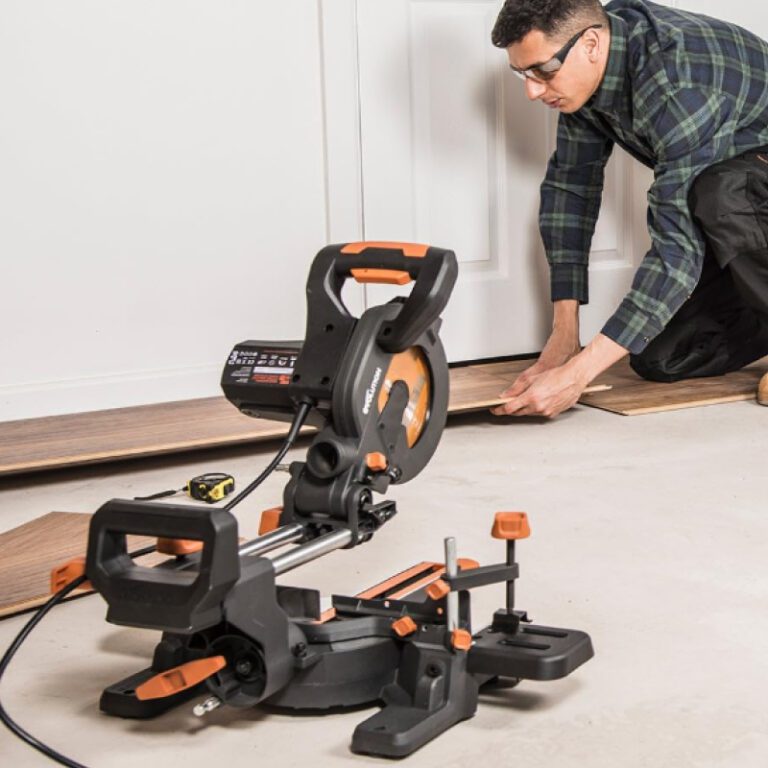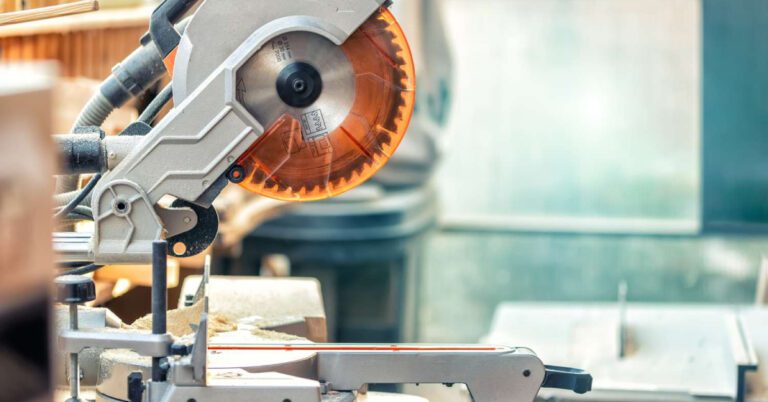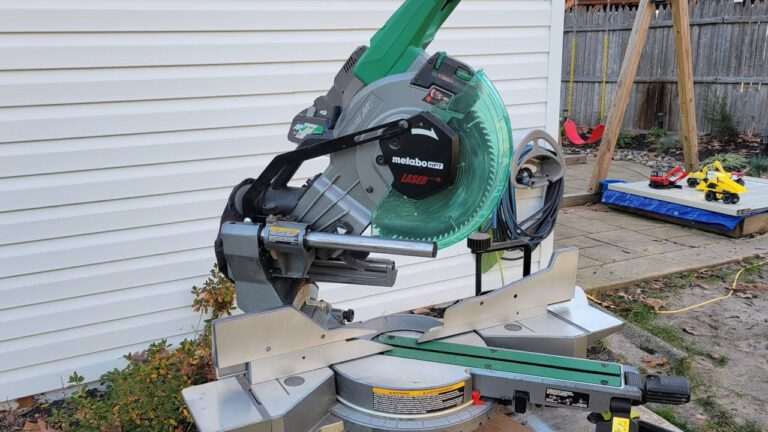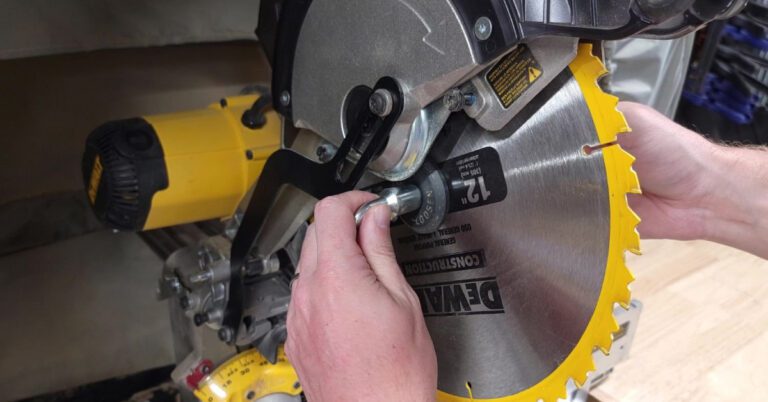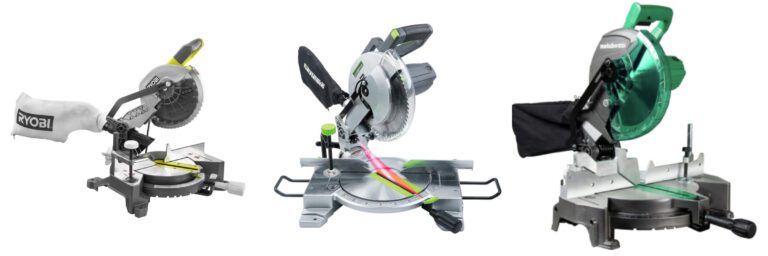As seasoned craftsmen immersed in the world of woodworking, we understand the pivotal role that precision tools play in bringing our visions to life. Among these tools, the miter saw stands as a stalwart companion, facilitating immaculate cuts with its steadfast efficiency. In our pursuit of excellence, we recognize the profound significance of selecting the right types of miter saws for our projects. It serves as the cornerstone of our craftsmanship, dictating the accuracy and finesse of our creations. In this article, we embark on a journey to explore the diverse landscape of miter saws, delving into their intricacies and functionalities.
Basic Anatomy of the Different Types of Miter Saws
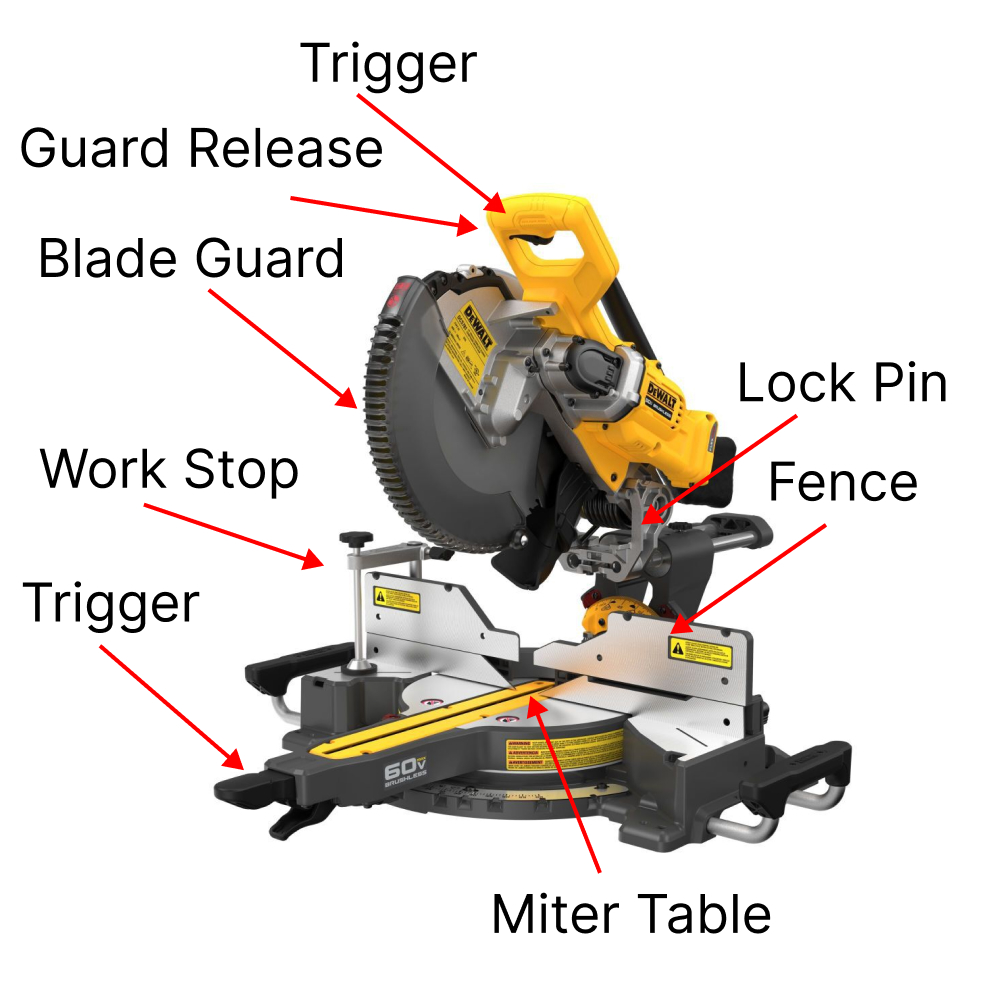
Understanding Key Components
Exploring the fundamental components of a miter saw unveils its intricate machinery, each element harmonizing to orchestrate precision and efficiency in woodworking endeavors. The blade, a quintessential feature, stands as the prime executor of cuts, its sharp teeth slicing through wood with finesse and accuracy. Complementing the blade’s prowess, the miter gauge emerges as a guiding force, facilitating angular adjustments on the different Types of Miter Saws with seamless dexterity. Meanwhile, the bevel angle adjustment empowers craftsmen to explore diverse cutting angles, unlocking the realm of creative possibilities. As guardians of alignment, the fence stands tall, ensuring steadfast support and optimal accuracy throughout the cutting process.
Importance of understanding the parts for effective use
To harness the full potential of a miter saw and achieve unparalleled mastery in woodworking, it is imperative to grasp the significance of its constituent parts. Understanding the anatomy of a miter saw not only cultivates a deeper appreciation for its mechanical prowess but also serves as a compass guiding craftsmen towards precision and efficiency. Mastery over each component empowers artisans to maneuver with finesse, unleashing their creative vision with unwavering precision. Moreover, comprehension of the parts fosters a symbiotic relationship between craftsman and tool, amplifying productivity and refining the artistry of woodworking endeavors. Thus, familiarity with the basic anatomy of a miter saw emerges as an indispensable cornerstone in the pursuit of woodworking excellence.
Different Types of Miter Saws
Standard Miter Saw
The standard miter saw features a pivoting arm for angled cuts and is ideal for basic crosscuts and miter cuts in woodworking projects. While affordable and straightforward, its limitations include a fixed cutting capacity and inability to perform complex bevel cuts on both sides of the material.
Compound Miter Saw
Moving on to the next item on our list of Types of Miter Saws, the Compound Miter Saw: The compound miter saw offers versatility with its ability to make bevel cuts in addition to standard miter cuts, enhancing precision in woodworking tasks like crown molding and picture frames. Despite its versatility, its smaller cutting capacity and single bevel design may limit its suitability for larger stock and certain projects.
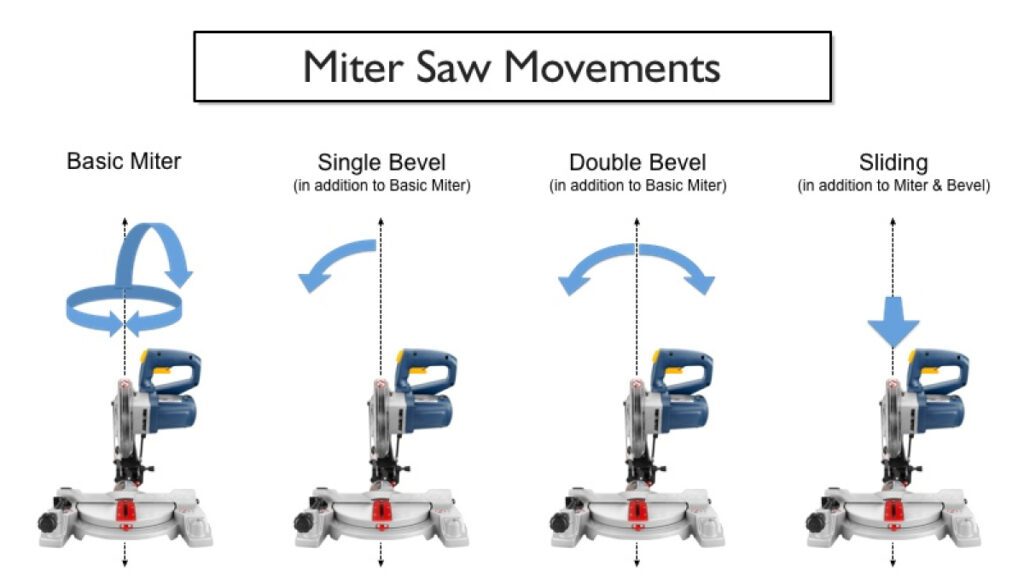
Sliding Compound Miter Saw
Combining the capabilities of a compound miter saw with a sliding feature, the sliding compound miter saw extends the reach of the blade for increased cutting capacity, making it suitable for projects like deck building and furniture making. However, its larger size and complexity may pose challenges in smaller workshops.
Dual-Bevel Miter Saw
The dual-bevel miter saw streamlines workflow with its ability to tilt the blade in both directions, eliminating the need to flip the workpiece for bevel cuts. This feature enhances efficiency and precision, making it ideal for projects requiring intricate bevel cuts and compound angles, though considerations like cutting capacity and build quality should be evaluated for optimal use.
Factors to Consider When Choosing Among Types of Miter Saws
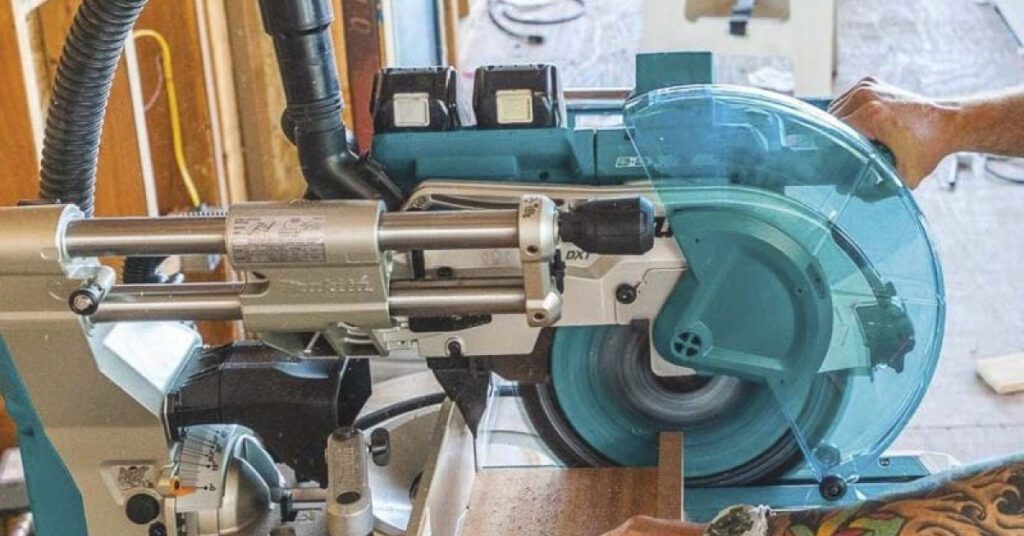
Budget considerations
When selecting a miter saw from our list of Types of Miter Saws, it’s essential to align your budget with the features and capabilities you require. While higher-end models offer advanced features, there are also budget-friendly options that can fulfill basic woodworking needs without breaking the bank.
Project requirements and scale
Assessing the scope and nature of your woodworking projects is crucial. Consider the types of cuts you’ll frequently perform, the size of the materials you’ll be working with, and the level of precision required to ensure the miter saw you choose aligns with your project demands.
Available workspace and portability needs
Evaluate the size of your workshop or workspace and determine if portability is a priority. Compact miter saws are suitable for smaller spaces, while larger models may offer increased cutting capacity but require more room. Additionally, if you anticipate moving the saw frequently, consider the weight and portability features.
Material and cutting capacity
Consider the materials you’ll be cutting and their thickness. Ensure the miter saw you choose has the necessary cutting capacity to handle your preferred materials comfortably. Models with larger blades and sliding mechanisms offer greater versatility and can accommodate a wider range of materials and sizes.
Safety features and user-friendliness
Prioritize safety features such as blade guards, electric brakes, and ergonomic designs to mitigate the risk of accidents. User-friendly features such as easy-to-read scales, comfortable handles, and intuitive controls enhance efficiency and ease of use during operation, contributing to a more enjoyable woodworking experience.
Tips for Getting the Most Out of Your Miter Saw
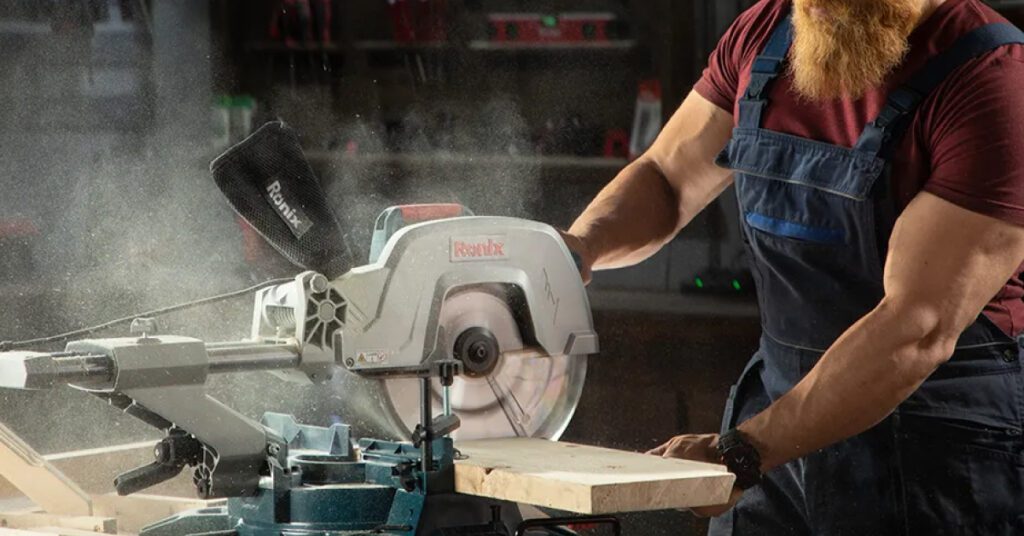
Proper blade selection
Choose the appropriate blade based on the material you’re cutting and the type of cut you need. For wood, select a blade with a high tooth count for smoother cuts, while a blade with fewer teeth is suitable for cutting through thicker materials like metal or plastic.
Understanding and adjusting angles on different Types of Miter Saws
Familiarize yourself with the miter and bevel angles and how they affect your cuts. Take time to adjust the angles accurately using the saw’s built-in adjustment features, ensuring precision and consistency in your work.
Maintaining blade sharpness and cleanliness
Regularly inspect the blade for dullness or debris buildup, and sharpen or clean it as needed to maintain optimal cutting performance. Use a blade cleaning solution or a wire brush to remove resin and other residues that can affect cutting quality.
Utilizing Types of Miter Saws accessories for enhanced functionality
Explore the variety of accessories available for miter saws, such as extension wings, workpiece supports, and laser guides, to enhance accuracy and efficiency in your projects. Experiment with different accessories to find the ones that best suit your workflow and project requirements.
Safety precautions and best practices
Prioritize safety at all times when operating a miter saw. Wear appropriate safety gear, including safety glasses and hearing protection, and keep your hands away from the blade’s path during cutting. Always secure your workpiece firmly in place and maintain a clear workspace free of clutter and distractions to minimize the risk of accidents. Regularly review and adhere to the manufacturer’s safety guidelines for your specific miter saw model.
Types of Miter Saws: Wrapping Things Up
We’ve explored various miter saw types, from standard to dual-bevel models, each offering unique features for woodworking needs. Choosing the right tool, like a miter saw, is crucial for precision and efficiency in woodworking tasks, aligning with project requirements and budget constraints. Let’s embrace each project as an opportunity to refine skills and explore new techniques, fostering a lifelong journey of learning and creativity in woodworking.

